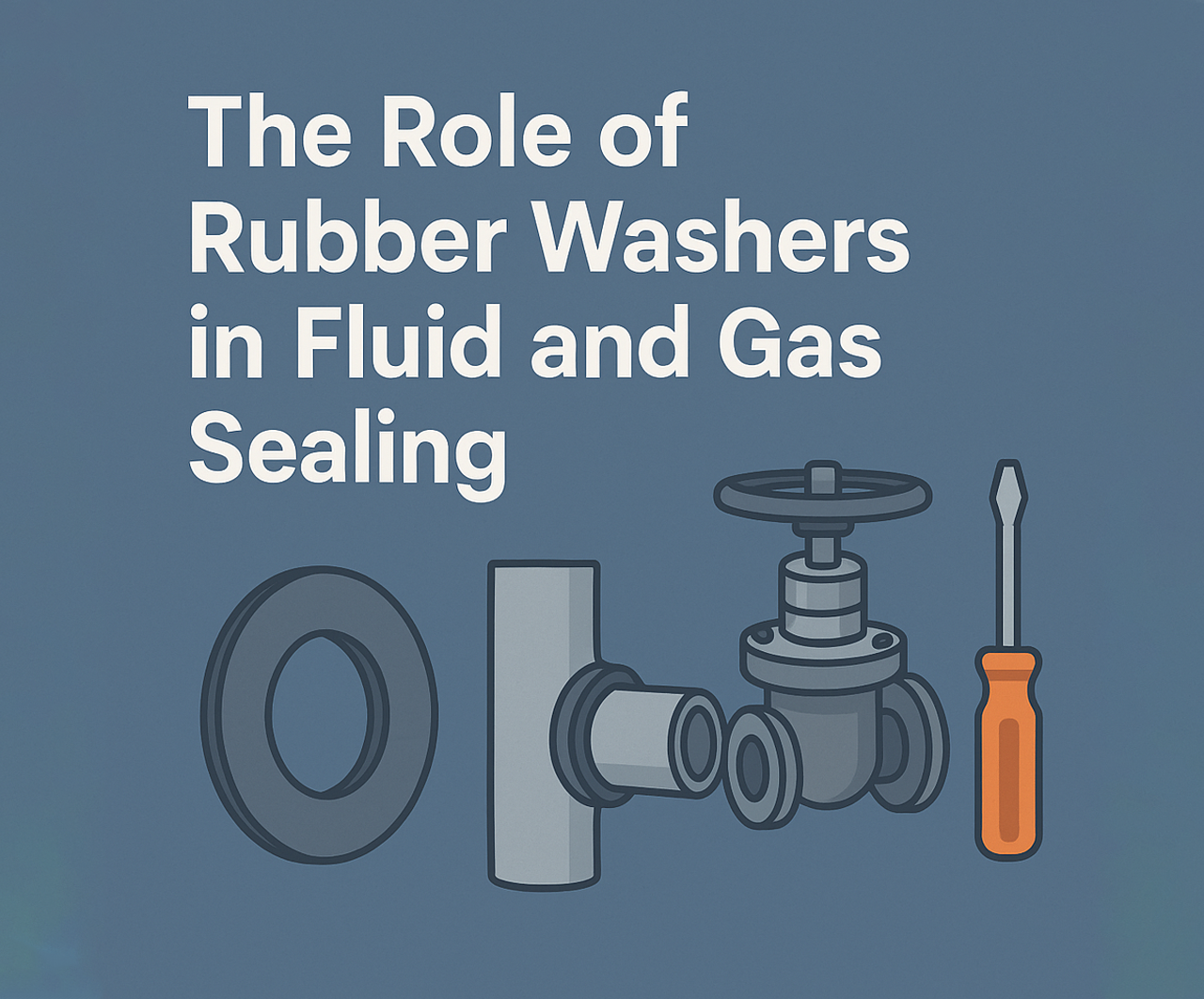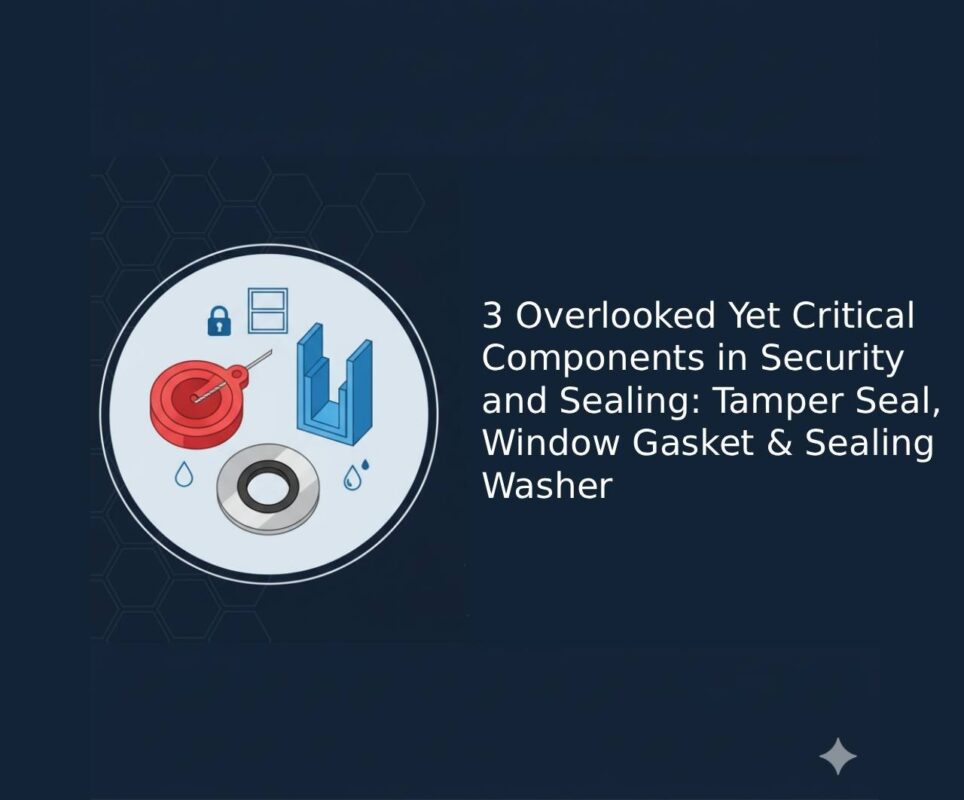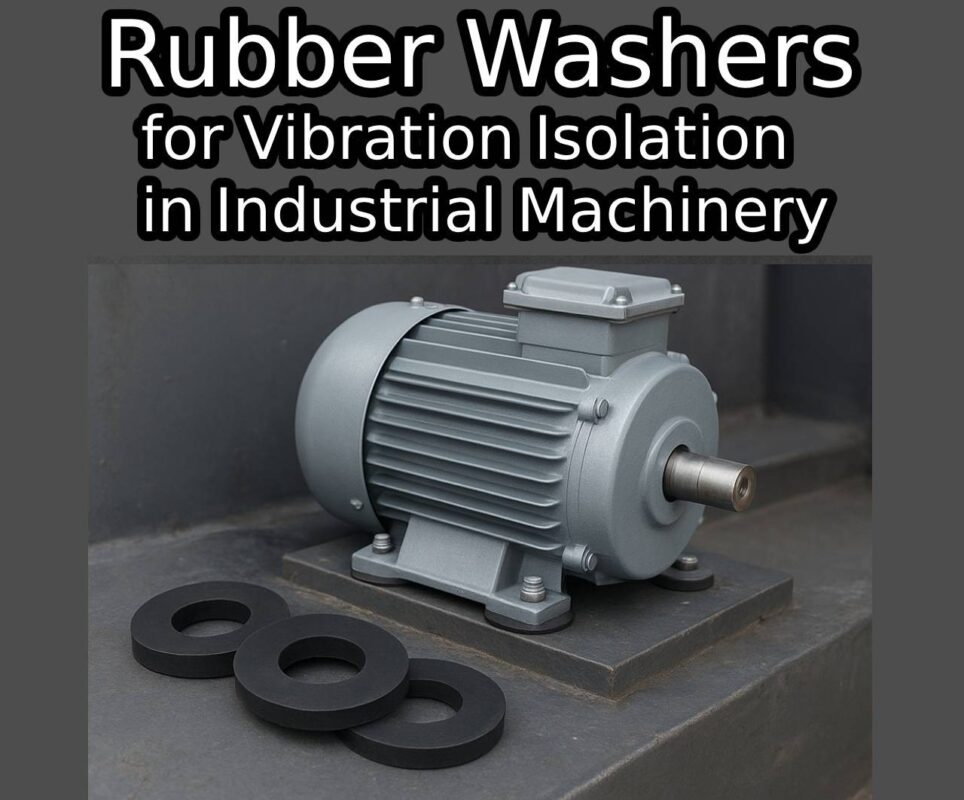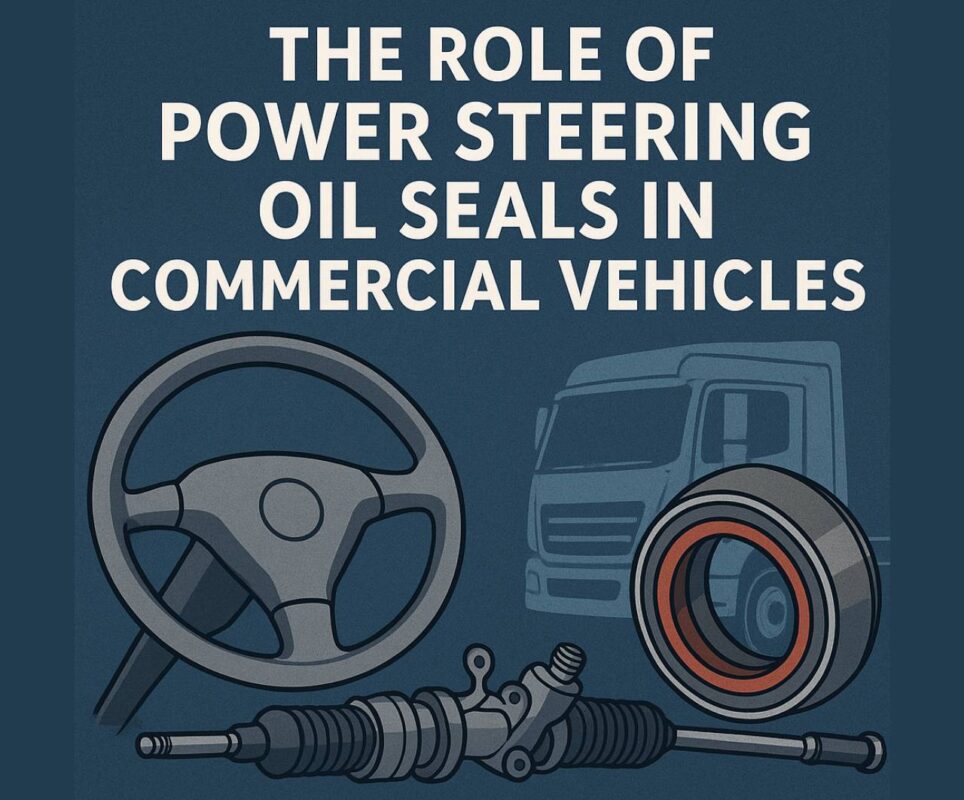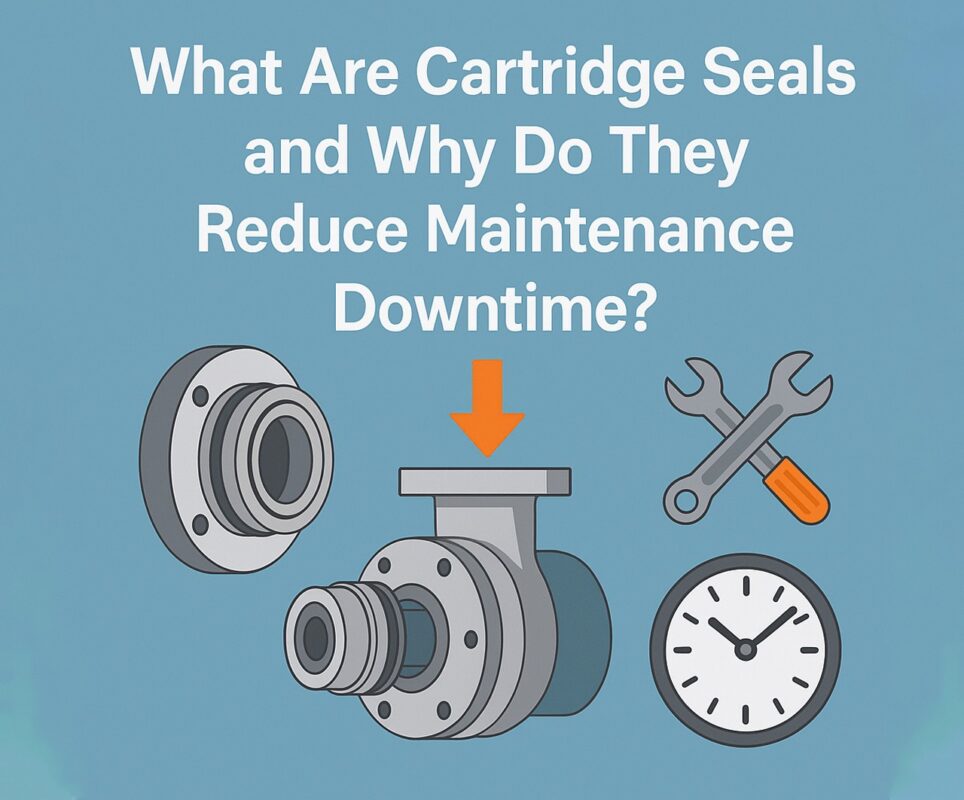In fluid and gas systems, where even the slightest leak can lead to performance issues, system failures, or safety hazards, sealing components play a critical role. Among these components, rubber sealing washers, thick rubber washer variants, and rubber gasket washer solutions stand out as essential tools in ensuring system integrity. Whether used in industrial pipelines, automotive engines, or household plumbing, these versatile sealing elements help maintain airtight and watertight environments, contributing to both efficiency and safety.
In this article, we’ll dive into how rubber sealing washers, thick rubber washer components, and rubber gasket washer applications support effective fluid and gas sealing, explore innovative materials and designs, and examine new frontiers in sealing technology. Know more..
Why Rubber Washers Matter in Sealing Systems
Rubber sealing washers serve as mechanical barriers that fill gaps between surfaces, preventing fluid or gas from escaping through joints or fittings. Their elasticity and compressibility allow them to conform to uneven surfaces, creating tight seals even under fluctuating pressures and temperatures.
There are three key reasons rubber washers are preferred in sealing applications:
- Flexibility and Compression
Rubber’s inherent elasticity allows it to compress under load, forming a seal that compensates for surface irregularities. - Chemical Resistance
Different types of rubber materials—such as EPDM, Nitrile (Buna-N), Neoprene, and Viton—offer resistance to oils, fuels, water, and chemicals. - Durability
A thick rubber washer, for example, can endure high pressures and extended use, reducing the frequency of maintenance and replacement.
When systems rely on tight seals, such as in compressed air units, hydraulic systems, or gas cylinders, the integrity of every joint depends on the quality and fit of components like rubber gasket washers.
Understanding the Types: Rubber Sealing Washers Explained
1. Rubber Sealing Washers
Rubber sealing washers are flat, disc-shaped components with a central hole. They’re commonly used in bolted joints or fittings to ensure leak-proof seals. These washers are often paired with metal washers to distribute force evenly and protect rubber material from extrusion.
Typical applications include:
- Faucet and valve seals
- Gas line fittings
- HVAC systems
- Medical equipment
The sealing function relies on the washer’s ability to compress and expand slightly with changing temperatures and pressure loads—making them ideal for dynamic systems.
2. Thick Rubber Washer
A thick rubber washer offers added resilience and sealing strength in high-pressure applications. It can better withstand extreme mechanical forces, compression cycles, and thermal expansion. The extra thickness allows for:
- Longer service life
- Superior resistance to blowouts or leaks
- Enhanced performance under vibration or torque
They are frequently used in automotive engines, pumps, and industrial pipelines where sealing reliability is critical.
3. Rubber Gasket Washer
A rubber gasket washer is often considered a hybrid between a gasket and a washer. These are designed for both sealing and cushioning purposes. Their versatility allows them to function in static or semi-static sealing applications where high durability and flexibility are needed.
Common uses:
- Sealing flanges
- Pipe unions
- Refrigeration units
- Marine hardware
Gasket washers can be cut into custom shapes and sizes to suit specific equipment, making them indispensable for custom-built systems.
Materials That Matter: Choosing the Right Rubber Compound
Selecting the right rubber material is crucial for performance. Here are a few common materials used for rubber sealing washers, thick rubber washer, and rubber gasket washer products:
- EPDM: Excellent for water and steam applications, UV and ozone resistant.
- Nitrile (Buna-N): Best for oil and fuel sealing.
- Neoprene: Good for general-purpose sealing, especially where weathering or mild chemicals are present.
- Silicone: Ideal for food-grade and medical applications due to its flexibility and thermal stability.
- Viton: Premium sealing for aggressive chemicals and extreme temperatures.
Each of these materials offers a unique set of benefits, and the choice largely depends on the type of fluid or gas, the temperature range, and pressure conditions.
Sealing Performance Factors: How Washers Prevent Leaks
Achieving effective sealing performance requires more than just placing a rubber sealing washer between two surfaces. Several design and application factors contribute to washer effectiveness:
1. Surface Finish
A smoother contact surface allows for better seal formation. Rough surfaces can cause gaps, even with a compressible washer.
2. Compression Load
The amount of force applied to compress the washer affects the seal. Too little pressure, and the seal may leak. Too much pressure can damage the washer.
3. Torque Control
Over-tightening can deform or extrude a rubber gasket washer, compromising its function. Proper torque specifications ensure balanced sealing without damage.
4. Temperature Cycling
As temperatures fluctuate, materials expand and contract. High-quality washers must accommodate this without losing their sealing properties.
5. Chemical Compatibility
Contact with incompatible fluids can degrade washer material, causing hardening, swelling, or cracking.
Innovations in Rubber Washer Design
Today’s sealing technologies demand smarter, more adaptive washer designs. Engineers are now experimenting with hybrid materials and multi-layer washers that combine rubber with metal or fabric reinforcements. Some modern developments include:
- Multi-laminate rubber washers: Combining different rubbers or integrating steel mesh for high-pressure stability.
- Coated washers: Rubber-coated metal washers provide a rigid core with soft sealing edges.
- Embedded sealing lips: Designed to improve sealing under low compression, perfect for lightweight systems.
Such designs aim to extend the usability of thick rubber washer components while maintaining minimal installation complexity.
Applications Across Industries
Rubber washers are found across every major industry that deals with fluids or gases. Here’s how different sectors rely on them:
Automotive
From fuel lines to radiators, rubber sealing washers and rubber gasket washer elements ensure leak-free performance in high-vibration environments.
Aerospace
Lightweight, high-performance rubber washers seal air and hydraulic systems in aircraft, where failure is not an option.
Marine
Saltwater corrosion resistance makes thick rubber washer parts a favorite for marine engine gaskets and pump systems.
Medical Devices
Sterile and non-reactive rubber materials are vital in systems requiring airtight or watertight seals.
Manufacturing
In automated processes, rubber washers seal everything from pneumatic actuators to fluid dispensing lines.
Environmental Considerations and Longevity
Rubber, like any material, degrades over time—especially when exposed to UV light, ozone, or harsh chemicals. Therefore, durability and environmental resilience are central concerns for sealing systems.
Best practices for maximizing washer life:
- Choose UV- and ozone-resistant compounds when used outdoors.
- Regularly inspect and replace washers in high-cycle systems.
- Store unused washers in cool, dry environments away from direct sunlight.
- Ensure compatibility with cleaning agents or chemicals in contact.
Sustainability in rubber washer production is also gaining traction. Recyclable and bio-based rubbers are being explored for environmentally friendly sealing solutions, especially in industries with strict green standards.
DIY vs. Industrial-Grade Washers: What’s the Difference?
While many consumers are familiar with rubber washers from basic hardware store kits, there’s a big gap between DIY and industrial-grade sealing components.
- DIY Washers: Often generic in size and made of basic rubber materials. Good for household plumbing or casual use.
- Industrial Washers: Engineered to strict tolerances, made with high-performance compounds, and often subjected to rigorous quality control.
If your application involves pressure systems, chemical exposure, or requires high-reliability sealing, investing in quality rubber gasket washers or thick rubber washers designed for industrial use is essential.
The Future of Rubber Washer Technology
With the ongoing development of automation, smart systems, and green technology, sealing requirements are evolving:
- Smart Washers: Embedded sensors to monitor compression and leak detection are being researched.
- Additive Manufacturing: 3D printing of customized rubber sealing washers for complex or prototype systems.
- Eco-Friendly Materials: Bio-based elastomers and recyclable washers are gaining attention.
These future-ready solutions will redefine sealing systems in everything from autonomous vehicles to next-gen aerospace designs.
Conclusion
In the world of fluid and gas systems, where efficiency, reliability, and safety are paramount, rubber sealing washers, thick rubber washer solutions, and rubber gasket washer components are unsung heroes. These small but powerful elements prevent leaks, reduce maintenance, and ensure consistent system performance across a wide range of industries.
From everyday plumbing fixtures to high-stakes aerospace assemblies, the right washer makes all the difference. As technology advances, so too will the materials, designs, and intelligence of rubber washers, ensuring they remain a vital part of our sealed, pressurized, and precision-driven world.
By understanding the types, materials, and performance factors involved, industries and engineers can continue to rely on rubber washers to meet tomorrow’s sealing challenges—one tight seal at a time.

